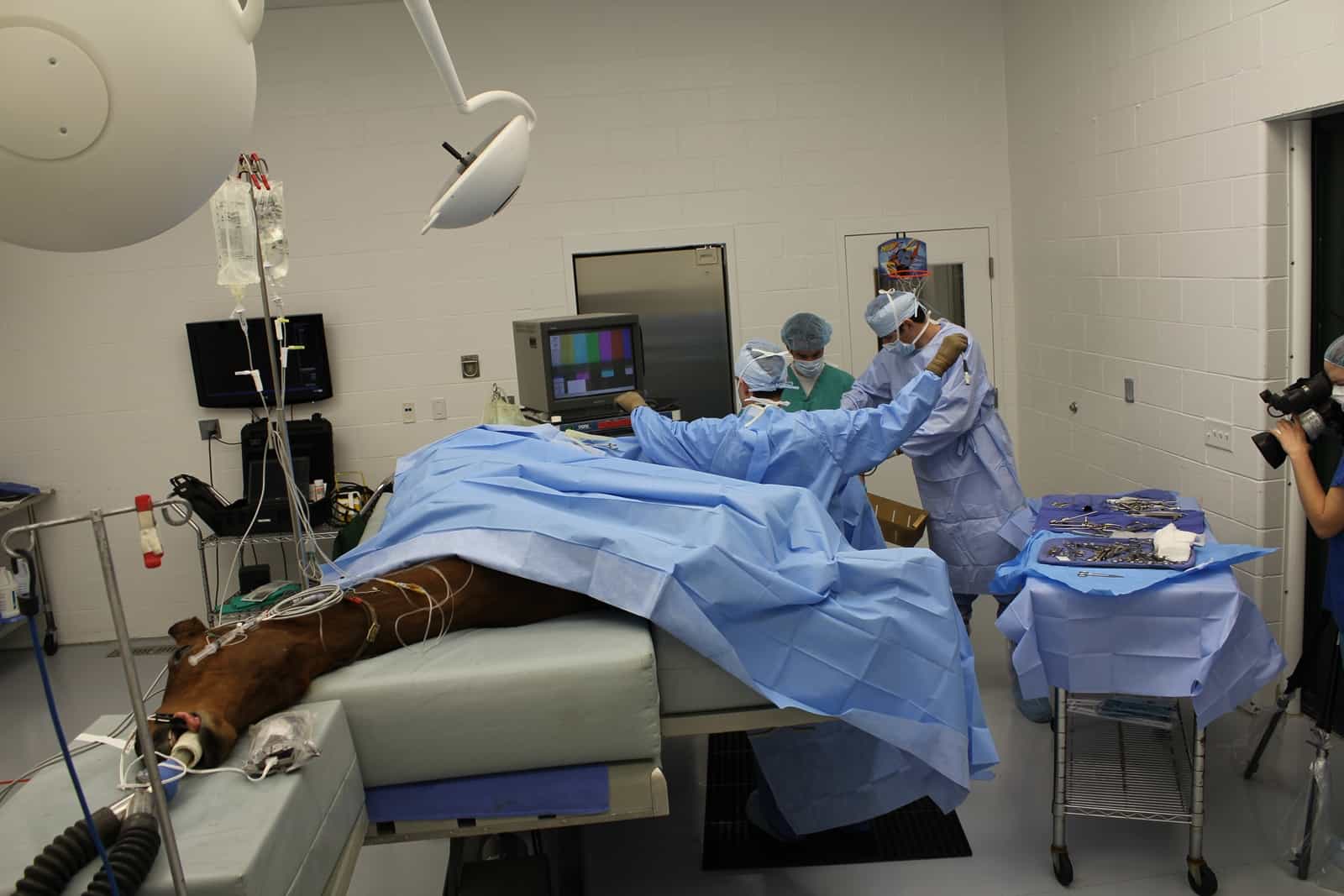What Happens When a Horse Undergoes General Anesthesia?

The equine anesthesiologist’s role is to deliver anesthesia, manage pain, and monitor the patient before, during, and after surgery. But how exactly do they do this?
During the University of Florida Veterinary Extension’s 2020 Healthy Horses Conference, Luisito Pablo, MS, DVM, Dipl. ACVAA, clinical professor in the University of Florida’s College of Veterinary Medicine Department of Comparative, Diagnostic, and Population Medicine, described how the anesthesia team takes care of horses.
Before and During Surgery
Pablo explained that before the anesthesiologist sees a patient, the horse will have undergone a thorough veterinary exam evaluating the animal’s condition. The anesthesiologist will review the horse’s bloodwork, and the morning of the procedure a veterinary nurse will place an intravenous (IV) catheter for drug administration. He or she will also weigh the horse.
“It’s very important for anesthesia to have an accurate body weight,” Pablo said, which the team will measure either the day before or morning of surgery.
Dr. Luisito Pablo
They then rinse the horse’s mouth with water and an antiseptic solution. “Rinsing of the mouth is routine in all horses prior to anesthesia,” he said. “Horses do not clean their mouths very well. If we intubate them through the mouth and insert the endotracheal tube into the trachea without rinsing, there might be a lot of hay or grass in the mouth. The foreign material will be pushed into the trachea and lungs.”
The anesthesiologist then administers an IV sedative—most commonly a combination of xylazine (a sedative) and butorphanol (an opioid analgesic for pain control).
“It is important that the horse is well-sedated before we induce anesthesia to ensure a smooth transition to unconsciousness,” Pablo said.
Then a handler leads the horse into a well-padded induction area. The team will watch for changes in the horse (e.g., dropping eyelids, muscle relaxation, head lowering) from the sedative.
“We want to see a very sedated horse before anesthesia induction, which is when the horse will lose consciousness and fall to the ground,” Pablo said.
The anesthesiologist then prepares the drugs for induction—the most common combination being diazepam for muscle relaxation and ketamine for anesthesia—puts them in a syringe, and administers the drugs as quickly as possible to prevent the horse from becoming excited.
Pablo said at least three people are typically on hand to support and control the horse on his way down, which takes 45 seconds to one minute. Once the horse is down, he’ll be situated on his side and intubated. The anesthesiologist uses a mouth gag to hold the mouth open and inserts a tube into the trachea through which he or she will administer anesthetic and oxygen during surgery. Meanwhile, the team attaches straps to the horse’s legs to slowly hoist and move him to the surgery table.
Once on the surgery table, the technicians remove the horse’s halter and position his head properly. They attach the endotracheal tube to the anesthesia machine, which will administer the inhalant anesthetic isoflurane to breathe for the horse throughout surgery.
Pablo said positioning horses on the surgery table in a way that prevents muscle and nerve damage in very important. This includes placing padding beneath the animal and between its hind legs. They also give fluids to support tissue perfusion and monitor blood pressure, as low blood pressure has been associated with myositis and muscle inflammation, he said.
Other steps he said they might take during anesthesia maintenance include giving IV lidocaine and performing nerve blocks, both of which are designed to reduce the amount of inhalant anesthesia (which acts as a depressant on the cardiovascular and respiratory systems) required to control pain and keep the horse anesthetized.
Once the surgical site has been prepared, the horse moves to the operating room, where the anesthesiologist will continue to manage the horse under anesthesia.
Post-Surgery
After surgery, the horse is disconnected from the machines and hoisted to the recovery area. Once in the recovery stall, the anesthesiologist will position the horse properly and pull its front down leg forward to minimize tension on the muscles.
“Recovery is the most critical part of equine anesthesia,” said Pablo. “This is when we can give drugs to slow down the recovery of the horse. But there are some things we cannot physically control. We are dealing with a very large patient—sometimes when they wake up they don’t know what is happening, and they try to get up before their muscles have enough strength.”
This can potentially lead to injury. Therefore, someone is always watching the horse during recovery. If that individual decides the horse needs support, he or she will hold the tail to help the horse get on his feet. Pablo said the team also uses a head and tail rope technique (with ropes attached to the halter and tail) to support the horse on its way up.
“Once we judge that the horse has good muscle coordination, we lead the horse back to barn,” Pablo said.
“Now you should have a better understanding of how we manage horses under anesthesia.”

Written by:
Alexandra Beckstett
Related Articles
Stay on top of the most recent Horse Health news with



















